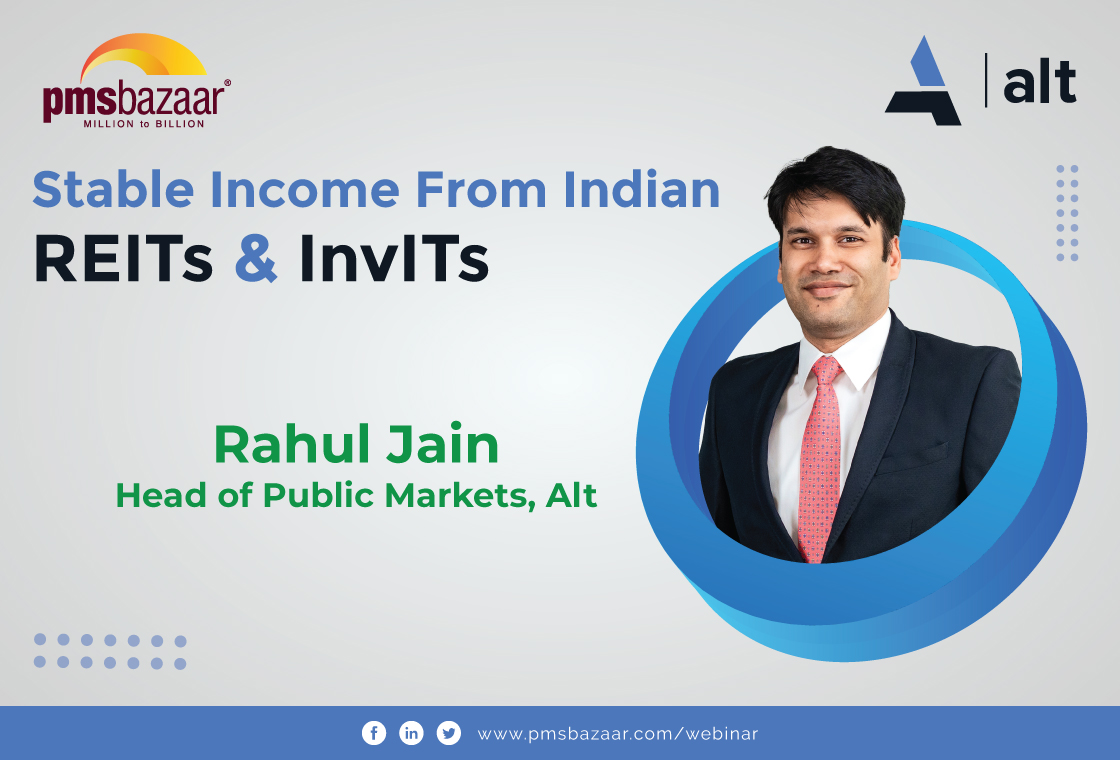PMS Bazaar organised a webinar on “Sector Insights for Optimising Growth & Value in India's Road to $5 Trillion Economy,” featuring Aniruddha Sarkar, from Quest Investment Advisors.

Aniruddha Sarkar, CIO, and Fund Manager at Quest Investment Advisors provided a comprehensive overview of the Indian economic landscape and outlined strategies for optimal growth during the PMS Bazaar webinar.
The webinar covered the crucial role of active management in navigating today's volatile markets. The fund manager discussed strategies such as sector and market cap rotation, and balancing value and growth investments. In the webinar, Sarkar emphasised the benefits of active management in emerging markets like India, exploring future growth sectors and investment opportunities.
Significance of active management
Sarkar explained why an active management style was important in a market like India. He noted that the pace of events driving the equity markets had drastically changed. The amount of money coming into the market, both domestically and internationally, had gone up multifold. As such, he stated that, it has become even more important to actively monitor the sectors to invest. Sarkar argued that, unlike in more mature markets, an active style of investment management in an emerging market like India aided in generating alpha. He attributed the alpha he achieved over the last ten years to his active style of management.
Three key active management styles
Sarkar then described the three styles that he believed truly identified an active style and were required as India grew. The three styles were sector rotation, market cap rotation, and balancing value and growth style. He explained that sector rotation involved catching the business cycles.
He noted that each phase of the business cycle (expansion, peak, slowdown, and trough) merged into the other. During the different phases of the business cycle, factors such as trade growth, the interest rate cycle, employment, economic activity, and the valuation cycle all fluctuated. The goal was to buy when no one else wanted to and to exit when everyone else wanted to.
Sarkar emphasised the importance of market cap rotation, noting that there were years when large caps performed better than small and mid-caps, and vice versa.
Finally, he pointed out that growth investors and value investors typically looked at different types of companies and argued that investors could not be fixated on either value or growth companies.
India’s path to economic growth
Sarkar then compared the projected growth of India to the historical growth of Germany, Japan, and China. He argued that the common factors between these three economies — strong government, demographics, a growing manufacturing sector, and exports — were similar to what India was experiencing. He pointed out that India's per capita GDP in 2019 was exactly where China's was in 2006.
Sarkar went on to identify several enabling factors that could lead to growth in India's GDP. These factors included regulation and a focus on infrastructure building, both of which he attributed to having a strong government. Other enabling factors he discussed included land and labour reforms, improved logistics, demographics, and cost competency. He argued that the largest area of potential growth in India's GDP was in manufacturing. He pointed to the growth in India's production of mobile phones and steel as evidence of the country's manufacturing potential. He acknowledged that while India had room for improvement in areas like innovation and ease of doing business, it continued to be the fastest-growing economy in the world.
Sector-specific insights
Sarkar then named the three sectors he was most bullish on for the next few years: manufacturing, consumption, and financial services. He argued that these three sectors were all interconnected and would all benefit from and contribute to the growth of the Indian economy. Sarkar noted that India was not as reliant on exports as some other countries and argued that its large domestic consumer base was a significant advantage. He pointed out that financial services were the backbone of any growing economy.
He responded to a question about India's goal of becoming a developed nation by 2047. He expressed optimism, noting that the government's fiscal position gave it significant flexibility. He predicted that the government would continue to spend on infrastructure.
Sarkar also stated the sectors he was not bullish and explained that Quest avoided investing in metals. He said that he was not bullish on FMCGs but would begin to reevaluate them as the incomes of the agricultural sector improved. Finally, in identifying new investment opportunities, Sarkar explained that the firm looked for companies with high entry barriers that could become profitable.
Sarkar shared insights on the Indian investment landscape and answered the audience’s questions. For more information on this webinar, watch the recording of this session through the link below.
Get access to rich data and analytics of PMS & AIF by subscribing to us. Join the 65000+ investors & experts: Subscribe NOW
Recent Blogs

Long-Only AIFs Rebound Sharply in October; Long-Short Strategies Lag Despite Lower Volatility
106 long-only AIFs averaged 3.68% vs 32 long-short AIFs at 2.7%; only 24–31% of funds beat key indices

Markets log strongest monthly gains in 7 months; PMS performance turns near-uniform in October
Nifty 50 TRI gained 4.62%, BSE 500 TRI rose 4.27%; 415 of 427 equity PMSes ended positive

How SMEs are Shaping India’s Investment Landscape?
PMS Bazaar recently organized a webinar titled “How SMEs are Shaping India’s Investment Landscape?” which featured Mr. Shrikant Goyal, Fund Manager, GetFive Opportunity Fund.

Stable Income from Indian REITs and InvITs
PMS Bazaar recently organized a webinar titled “Stable Income from Indian REITs and InvITs,” which featured Mr. Rahul Jain, Head of Public Markets, Alt.

5 Key Considerations Before Investing in AIFs in India
Alternative Investment Funds (AIFs) have emerged as a compelling option for sophisticated investors seeking diversification and potentially superior returns. But venturing into AIFs requires a clear understanding of their unique characteristics that go beyond simply knowing what they are and their categories.

How AIF can help in diversification?
Traditionally, Indian investors have relied on a mix of stocks and bonds to build their wealth. While this approach offers diversification, it can still leave your portfolio vulnerable to market fluctuations. Enter Alternative Investment Funds (AIFs), a dynamic asset class gaining traction for its ability to unlock diversification beyond the realm of conventional options.

Long-Short AIFs Outperform Again Even as Markets Rebound in September
104 long-only funds shows an average monthly gain of just 0.37 per cent, while long-short AIF category averaged 0.94 per cent

Resilience returns as markets rebound in September; Multi-asset PMSes lead pack
Over 63% of equity PMSes ended September in green; nearly two-thirds outperformed key benchmarks.

